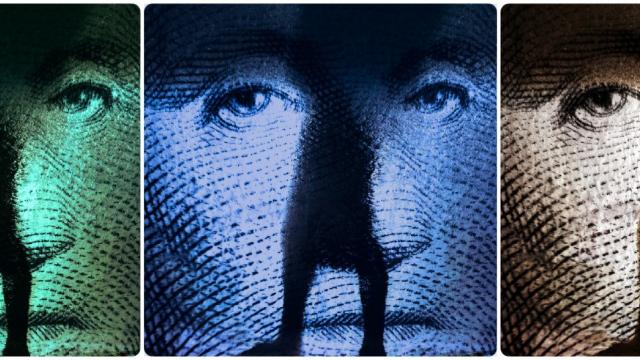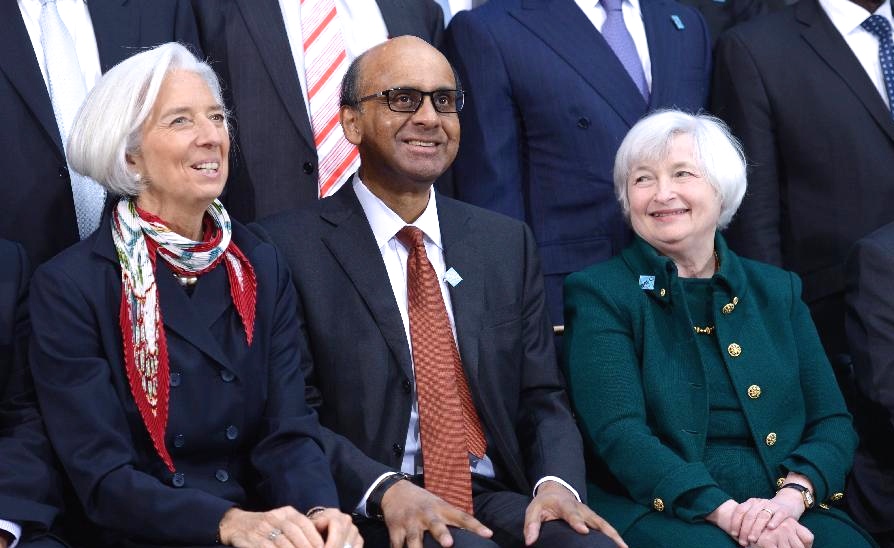
One thing to be said for the women now heading the Federal Reserve and the IMF: compared to some of their predecessors, they are refreshingly honest. The Wall Street Journal reported on July 2:
"Two of the world’s most powerful women of finance sat down for a lengthy discussion Wednesday on the future of monetary policy in a post-crisis world: U.S. Federal Reserve Chairwoman Janet Yellen and International Monetary Fund Managing Director Christine Lagarde. Before a veritable who’s-who in international economics packing the IMF’s largest conference hall, the two covered all the hottest topics in debate among the world’s central bankers, financiers and economists."
Among those hot topics was the runaway shadow banking system, defined by Investopedia as “the financial intermediaries involved in facilitating the creation of credit across the global financial system, but whose members are not subject to regulatory oversight. The shadow banking system also refers to unregulated activities by regulated institutions.” Examples given include hedge funds, derivatives and credit default swaps.
Conventional banks also engage in “shadow banking.” One way is by using their cash cushion as collateral in the repo market, where they can borrow to invest in the stock market and other speculative ventures. As explained by Bill Frezza in a January 2013 Huffington Post article titled “Too-Big-To-Fail Banks Gamble With Bernanke Bucks”:
"If you think [the cash cushion from excess deposits] makes the banks less vulnerable to shock, think again. Much of this balance sheet cash has been hypothecated in the repo market, laundered through the off-the-books shadow banking system. This allows the proprietary trading desks at these “banks” to use that cash as collateral to take out loans to gamble with. In a process called hyper-hypothecation this pledged collateral gets pyramided, creating a ticking time bomb ready to go kablooey when the next panic comes around."
Addressing the ticking time bomb of the shadow banking system, here is what two of the world’s most powerful women had to say:
"MS. LAGARDE: . . . You’ve beautifully demonstrated the efforts that have been undertaken . . . in terms of the universe that you have under your jurisdiction. But this universe . . . has generated the creation of parallel universes. And . . . with the toolbox with all the attributes that you have — what can you do about the shadow banking at large? . . .
"MS. YELLEN: So I think you’re pointing to something that is an enormous challenge. And we simply have to expect that when we draw regulatory boundaries and supervise intensely within them, that there is the prospect that activities will move outside those boundaries and we won’t be able to detect them. And if we can, we won’t be — we won’t have adequate regulatory tools. And that is going to be a huge challenge to which I don’t have a great answer."
Limited to her tools, there probably is no great answer. All the king’s horses and all the king’s men could not rein in the growth of the shadow banking system, despite the 828-page Dodd-Frank Act. Instead, the derivatives pyramid has continued to explode under its watch, to a notional value now estimated to be as high as $2 quadrillion.
At one time, manipulating interest rates was the Fed’s stock in trade for managing the money supply; but that tool too has lost its cutting edge. Rates are now at zero, as low as they can go – unless they go negative, meaning the bank charges the depositor interest rather than the reverse. That desperate idea is actually being discussed. Meanwhile, rates are unlikely to be raised any time soon. On July 23, Bloomberg reported that the Fed could keep rates at zero through 2015.
One reason rates are unlikely to be raised is that they would make the interest tab on the burgeoning federal debt something taxpayers could not support. According to the Treasury’s website, taxpayers pay about $400 billion a year in interest on the federal debt, just as they did in 2006 — although the debt has nearly doubled, from $9 trillion to over $16 trillion. The total interest is kept low by extremely low interest rates.
Worse, raising interest rates could implode the monster derivatives scheme. Michael Snyder observes that the biggest banks have written over $400 trillion in interest rate derivatives contracts, betting that interest rates will not shoot up. If they do, it will be the equivalent of an insurance company writing trillions of dollars in life insurance contracts and having all the insureds die at once. The banks would quickly become insolvent. And it will be our deposits that get confiscated to recapitalize them, under the new “bail in” scheme approved by Janet Yellen as one of the Fed’s more promising tools (called “resolution planning” in Fed-speak).
As Max Keiser observes, “You can’t taper a Ponzi scheme.” You can only turn off the tap and let it collapse, or watch the parasite consume its food source and perish of its own accord.
Collapse or Metamorphosis?
The question being hotly debated in the blogosphere is, “What then?” Will economies collapse globally? Will life as we know it be a thing of the past?
Not likely, argues John Michael Greer in a March 2014 article called “American Delusionalism, or Why History Matters.” If history is any indication, governments will simply, once again, change the rules.
In fact, the rules of money and banking have changed every 20 or 30 years for the past three centuries, in an ongoing trial-and-error experiment in evolving a financial system, and an ongoing battle over whose interests it will serve. To present that timeline in full will take another article, but in a nutshell we have gone from precious metal coins, to government-issued paper scrip, to privately-issued banknotes, to checkbook money, to gold-backed Federal Reserve Notes, to unbacked Federal Reserve Notes, to the “near money” created by the shadow banking system. Money has evolved from being “stored” in the form of a physical commodity, to paper representations of value, to computer bits storing information about credits and debits.
The rules have been changed before and can be changed again. Depressions, credit crises and financial collapse are not acts of God but are induced by mechanical flaws or corruption in the financial system. Credit may stop flowing, but the workers, materials and markets are still there. The system just needs a reboot.
Hopefully the next program that gets run will last more than 20 or 30 years. Ideally, we might mimic the ancient Mesopotamians, the oldest and most long-lasting civilization in history, and devise an economic system that lasts for millennia. How they did it, along with some other promising models, will be the subject of another article.
About Those Derivatives
How to kill the derivatives cancer without killing the patient? Without presuming to have more insight into that question than the head of the Fed or the IMF, I will just list some promising suggestions from a variety of experts in the field (explored in more depth in my earlier article):
-
Eliminate the superpriority granted to derivatives in the 2005 Bankruptcy Reform Act, the highly favorable protective legislation that has allowed the derivatives bubble to mushroom.
-
Restore the Glass-Steagall Act separating depository banking from investment banking.
-
Break up the giant derivatives banks.
-
Alternatively, nationalize the too-big-to-fail banks.
-
Make derivatives illegal and unwind them by netting them out, declaring them null and void.
-
Impose a financial transactions tax on Wall Street trading.
-
To protect the deposits of citizens and local governments, establish postal savings banks and state-owned banks on the model of the Bank of North Dakota, the only state to completely escape the 2008 banking crisis.
These alternatives are all viable possibilities. Our financial leaders, in conjunction with our political leaders, have continually re-created the web of money and credit that knits our economy together. But they have often taken only their own interests and those of the wealthiest citizens into account, not those of the general public. It is up to us to educate ourselves about money and banking, and to demand a system that is accountable to the people and serves our long-term interests.
Ellen Brown is an attorney, founder of the Public Banking Institute, and author of twelve books, including the best-selling "Web of Debt." In "The Public Bank Solution," her latest book, she explores successful public banking models historically and globally. Find Ellen Brown on the Commons
3 WAYS TO SHOW YOUR SUPPORT
- Log in to post comments














